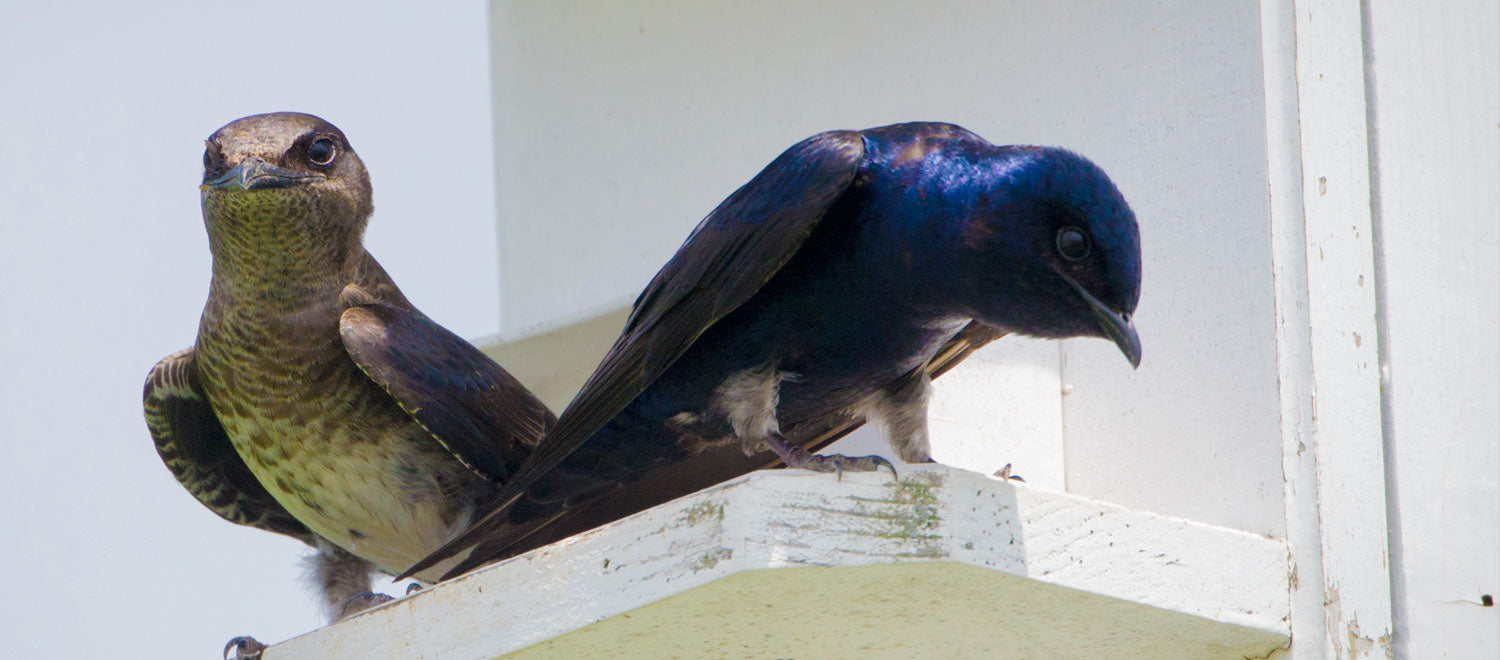Purple martins are a beautiful and popular breed of North American swallow. Their delicate form and majestic flight silhouette have made them a longstanding favorite among birders of all ages, but the relationship isn’t strictly one way. On the contrary, due to their many natural predators, purple martins have grown dependent on man for their housing needs, and bird enthusiasts are typically happy to oblige.
If you’re interested in attracting beautiful purple martins to your yard, a purple martin birdhouse is a great investment. Here are seven things you can do to make the most of your purple martin bird watching hobby.
1. Buy a house designed specifically for purple martins.
When you hear the word “birdhouse,” you probably think of the single-holed mini house you built in scouts or at camp. While that sort of house is fine for birds like finches, it’s not at all what purple martins are looking for. Purple martins prefer to nest in colonies, so a good purple martin birdhouse will have at least six apartments. More than six is fine, though fewer will be less appealing to these birds.
2. Pick a white house.
Birdhouses for purple martins are typically white, as that’s the color that the birds prefer. It’s not that they’re aesthetically picky — on the contrary, it’s that they know that a white birdhouse means that the sunlight will be reflected rather than absorbed, and that the house will be less hot and more comfortable. If you’re a creative type who is tempted to paint your new white purple martin birdhouse, resist that urge! The like white. A little bit of color on the roof or trim (mostly from building materials) is OK, but the house should be predominantly white.
3. Install it in an open spot.
Purple martins prefer to be in open areas with nothing obstructing their flight paths. Therefore, you’ll want to find an open spot that’s at least 40 away from both human dwellings and trees to put up your purple martin house. Installing it too close to your home or in a more wooded area probably won’t attract as many birds as you’d like.
4. Put your house up high.
Like most other birds, purple martins are most comfortable when they’re in the air. This keeps them a safe distance from their earthbound predators, such as raccoons, cats, and especially snakes, all of which can decimate your purple martin colony if they have easy access to it. To avoid an avian massacre, install your purple martin house 12 to 18 feet off the ground on a sturdy pole.
5. Make sure the house won’t twist or spin.
The orientation of the birdhouse entrance is important to purple martins. To be specific, they like consistency. So, putting a purple martin house on a pole where it can spin, twist, or sway can cause birds to become confused. Eventually, they’re likely to abandon such a dwelling. To be as hospitable as possible to these winged beauties, install your house with a fixed orientation. The good news is that purple martins aren’t picky when it comes to direction; north, south, east, and west are all fine, as long as it’s consistent.
6. Wait a few weeks before putting up a new house.
While it may seem like common sense to have a new purple martin birdhouse up and ready for your avian buddies before they return from their winter migration, it’s actually best to wait about four weeks after the first purple martins arrive to put it up. This is because the returning birds will be the older members of the colony, and they’ll return to whatever house they used the previous year. In a few weeks, the younger males will return and look to set up a nest for the first time; these are the birds you want to attract. Also, by waiting a few weeks, you’re more likely to keep out starlings, which are some of the purple martin’s biggest threats. Once you’ve established your house as a welcome colony, the birds are likely to return year after year.
7. Use a predator guard.
Purple martins have natural predators both on land and in the air, so it’s wise to put up a guard at the bottom of your pole and a baffle around the house itself. The former will deter snakes, which are notorious for climbing up unguarded poles to get to purple martin houses, while the latter will keep away owls and other large birds. Consider these a little insurance policy for your beloved birds. It’s not a given that predators will attack if there aren’t any guards on your house, but installing them helps to ensure the safety of the purple martins you’re housing.
Image licensed under the Creative Commons Attribution-Share Alike 2.0 Generic license.
